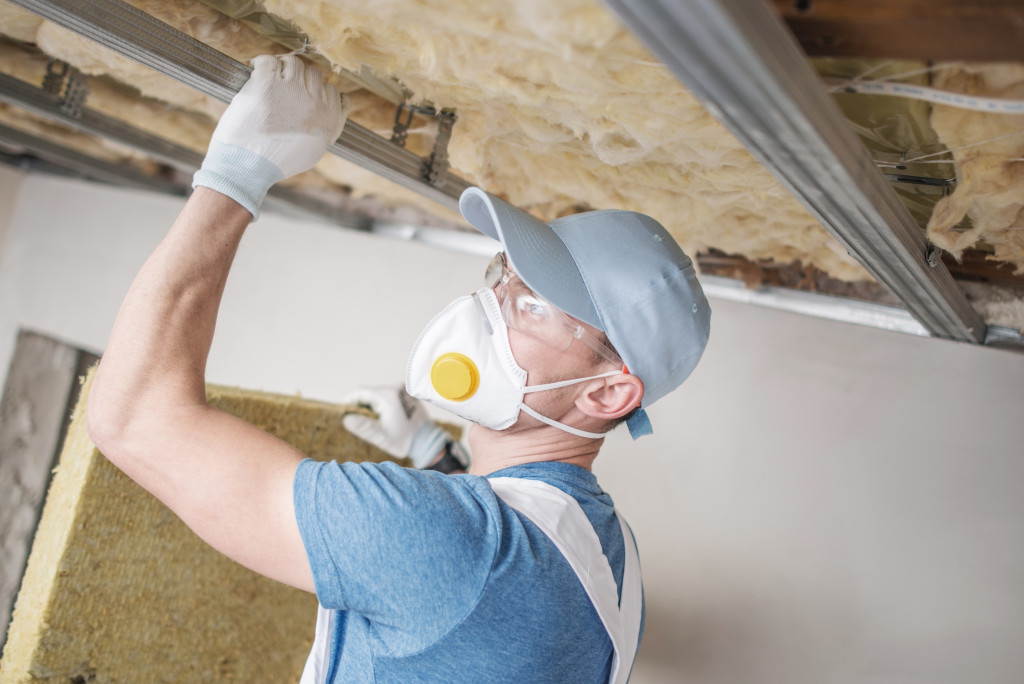Compared with other parts of the world known for having mild weather conditions, the majority of the United Kingdom is known for having harsh weather conditions. Whether it’s heavy rainstorms or freezing winters, there’s no doubt in anyone’s mind that these extreme weather conditions can cause discomfort for a lot of homeowners. Not only does this cause discomfort, but sudden fluctuations in temperature can also place a lot of stress on construction materials, which can eventually cause damage to structures in the long run.
Fortunately, most HVAC systems can ensure that most homes are insulated, and the internal temperatures of structures are maintained for better comfort for the inhabitants. However, properly designing a home and using your ventilation, air conditioning, and heating systems can drastically affect energy bills. Unless your home was specifically built with energy efficiency in mind, one of the best ways to cut down on your energy spending is by adding insulation through renovations and new materials.
Although adding insulation and new renovations to your home might seem like an added cost, this is known for being a great way of saving energy and money in the long run. What are some ways to maximize insulation at home? How do you effectively cut down on energy costs? Here’s what you need to know.
How Much Insulation Do You Need?
Right before we get into some effective ways to maximize insulation in your home, we first have to determine how much insulation you need. Of course, the amount of insulation your home requires is ultimately determined by various key factors. But if you’re planning on accurately knowing the state of your home’s insulation, the efficiency of your HVAC system, and your energy consumption, you might want to consider seeking help from an energy auditor or an HVAC technician.
In most cases, these professionals can determine areas of your home that will require air sealing as a means of ensuring that the temperature won’t fluctuate in the area. However, if there are no professionals that are close to you, you might want to consider asking yourself the following questions:
- Where is your home located? Was insulation taken into consideration?
- What is the type of insulation that you have?
- What are the current thickness and R-value of your home’s insulation materials?

If you live in a newly built property, you can ask your builder regarding this information since most will have records regarding your home’s design. But if you’re living in an older home, you might have to get help from professionals or do some of the inspections yourself.
Still, it’s important to consider that the thickness of certain building materials does not necessarily mean that your home is well-insulated. Again, insulation is determined by some key factors. Here’s what you need to know.
Focusing On Your Entry Points and Airways
One of the most important parts of insulation is minding your home’s entry points. Naturally, heat will usually transfer from one area to another if there is an imbalance in temperature. If this is the case, you need to ensure that your entry points are both sealed or opened simultaneously so that there is proper cooling or heat retention.
Entry points can come in many forms, such as your home’s entrance, windows, and even ventilation systems. For example, if you’re planning on retaining your home’s heat and ensuring that everyone remains comfortable, you might want to install air-tight windows and doors that can ensure that heat stays inside the home.
Fortunately, some companies are well aware of the needs of individuals when it comes to ensuring that their homes remain well ventilated and insulated. For instance, professional window film installation specialists can ensure that your home is properly insulated by adding an extra layer of protection to your windows. Additionally, this is a great way to reduce glare and have a more private living area.
Be Mindful of Your Attic
Another important way to maximize your home’s insulation is by ensuring that your attic is insulated. It goes without saying that heat, especially in hot air, will usually rise upwards. Therefore, most experts would suggest using loose-fill and thick insulation materials.
Loose-fill is a relatively inexpensive means of retaining a good amount of heat while still covering the majority of the area. But prior to installing these materials, you should seal out any air leaks and start completing repairs. This way, moisture and humidity won’t leak out.
There are a variety of ways to insulate your home without having to spend a luxury on HVAC equipment and construction materials. Still, it’s important to consider the fact that each home is different in its own way, and the renovations that you’ll have to do will ultimately be determined by the needs and wants of the inhabitants. At the end of the day, inspecting and evaluating your home’s insulation is the key to cutting down on maintenance costs and energy bills.
